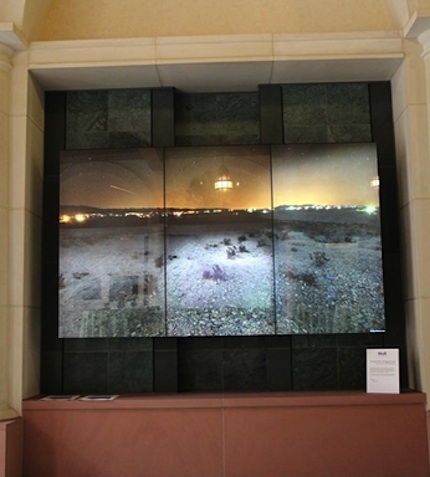USC's New Cinema School Comes Alive with Interactive Media
- By Dian Schaffhauser
- 06/13/13
The University of Southern California formally opened a new interactive media facility for its School of Cinematic Arts (SCA), which features a load of technology, including 4K projection, Oblong g-speak, multitouch presentation screens, professional-level game testing rooms, highly configurable spaces, and what it claims to be North America's largest university installation of interactive displays.
The grand opening included a panel discussion featuring alumnus George Lucas as well as Steven Spielberg and Don Mattrick, president of Microsoft's Interactive Entertainment business. Lucas and Spielberg both have buildings named after family members within the SCA complex. The school includes soundstages, animation facilities, post-production suites, mixing theaters, and all-digital classrooms, in addition to screening rooms that seat from 40 to 200 people.
During the discussion, Mattrick noted that SCA's educational approach of focusing on the future of the industry would be beneficial to the development of video games and other interactive media. "The biggest barrier we are going to face is talent--having great people who can work as a team. We have to find the next group of people who can create these blockbuster hits."

The display installation, which covers six alcoves in the library of the building, is outfitted with MultiTouch products. That includes 18 MultiTaction 55-inch Ultra-Thin Bezel displays.
"At the USC School of Cinematic Arts we are keenly aware that we are preparing the young women and men who will be the future innovators of our industry, and part of that preparation is making sure they have access to the best technology available," said the school's dean, Elizabeth Daley. "MultiTouch's technology allows our students to fully realize their creative vision, especially with regard to interactive features."
Some of the applications configured for MultiTouch and on display in the facility include an art piece by Associate Research Professor Perry Hoberman, an interactive time-lapse project on the construction of the building by Andreas Kratky, and the "PUCK" (for Place-based, Ubiquitous, Connected and Kinetic) project by Jen Stein, which shows users their resource usage in the building.
About the Author
Dian Schaffhauser is a former senior contributing editor for 1105 Media's education publications THE Journal, Campus Technology and Spaces4Learning.